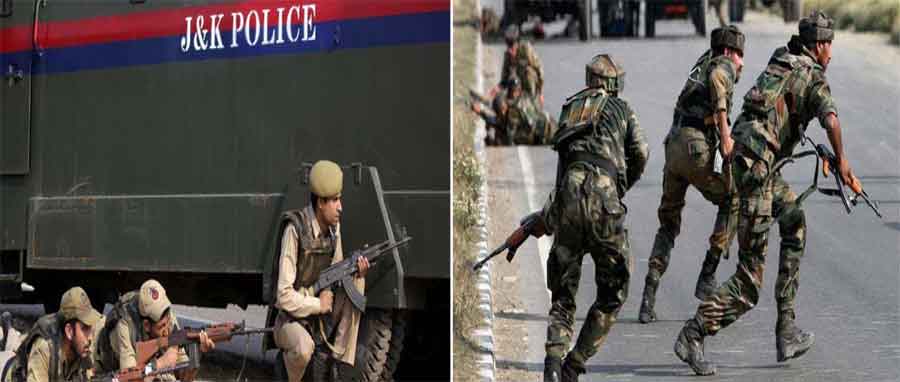In view of the fast pace of operations and the operational needs of the future, there is an urgent need to not only strengthen the Air Force and the Navy, but also widen the role of the Strategic Forces – both missile based and Special Forces. This is not to say that the role of the army has in any way diminished, and the force does not require modernisation, it does, but under the circumstances, when there is a need for others to augment their (neglected) capabilities, the army needs to work toward optimising its combat potential through modernisation and restructuring.
China realises that not only does she have to develop the capabilities to be able to fight a highly networked US military, but this would empower her forces and provide them a cutting edge against her neighbours…
The argument being put forward is that future challenges mandate a significant enhancement in the aero-space and maritime domains as also in enhancing the capabilities of undertaking long range strategic tasks – this translates to air, amphibious and for the conduct of ground operations – both covert and overt. If India’s deterrence is to appear robust and visible, it would add to her sense of security and provide her the space to concentrate on development exponentially.
In view of the emerging challenges from China’s forays in the Indian Ocean region and nibbling on the Eastern and Northern frontiers, there a pressing requirement for enhancing the capabilities for undertaking long-range mobile operations, both in the sub-continent and in and around the Indian Ocean Region (IOR). These can only be undertaken by having long endurance transportation assets and ensuring a denser footprint on the ground. In view of these requirements, there is a need to enhance the capabilities of not only the Air Force and the Navy, but also of the Strategic Forces as also of the Intelligence and Surveillance assets.
Networked Centric Warfare
Modern warfare is not only fast paced, but also dynamic, making situational awareness and decision making more important than actions taken on the ground. For success, the side capable of acting and/or reacting faster will definitely have the edge. It is therefore axiomatic that not only must a side have these capabilities, but also the capability to protect its sensors and force multipliers from enemy interference and be in a position to be able to use them despite enemy action. The greatest transformation that is underway in the rapidly modernising Peoples Liberation Army in China is on what they call ‘informationisation.’ China realises that not only does she have to develop the capabilities to be able to fight a highly networked US military, but this would empower her forces and provide them a cutting edge against her neighbours, including Russia and Japan – both fairly advanced in terms of their militaries, and in many ways ahead of India.
Though there has been some movement in this regard, India’s efforts are grossly inadequate and while individual services are making headway in this regard, it requires a holistic and seamless approach to be able to fight successful ‘integrated’ operations. While this again brings up the issue of centralised planning and control, this also throws up the requirement to have an empowered inter-service planning and working group, which must also incorporate civilian specialists to fill in technical voids, which in turn would spur the highly capable Indian IT industry to come up with path breaking technical solutions.
Fighting the Internal Conflict
A picture they say conveys more that what words bring to life. The above are action photographs of our Security Forces fighting what has been acknowledged by experts as a difficult type of war. While the spirit and dedication of our soldiers has always been commendable, the weapons and equipment being used, despite the fight going on for over two decades in J & K tell the picture of apathy on the part of the authorities. Note the J & K Police personnel – the weapons are the trusty AK and INSAS Rifles (not suitable for such like operations), their bullet proof vests are heavy and ill fitting and it is assumed that they are inured to head injuries.
Though close civil-military relations have never been encouraged in independent India, this has become a matter of weakness and the abysmal state of affairs has been allowed to degenerate to an all-time low.
Now note the army jawans of the Rastriya Rifles; their weapons again remain a mix of direct firing weapons, more suitable for conventional operations, their bullet proof vests equally heavy and ill fitting and while they may be wearing bullet proof patkas (flat faced helmets), only one who has worn them in combat know how heavy they are. Neither of them have the ware withal of firing Under barrel grenades and neither are equipped with non lethal weapons and equipment that would give them an edge for prevailing in suchlike operations. The bottom line is that despite decades of fighting the same enemy in the same terrain and operating conditions, there is little that has been done. In view of this reality check in what has been a frontline since long, it would be a revelation to see the operating conditions of the CRPF and other forces operating in the Naxal affected areas of the nation. Clearly, much has to be learnt to make the forces capable of doing what has been asked from them.
Civil-Military Relations
Though close civil-military relations have never been encouraged in independent India, this has become a matter of weakness and the abysmal state of affairs has been allowed to degenerate to an all-time low. This is an aberration for the new government to correct and revive the faith in the system – especially amongst the military services. Despite the much hyped announcement on the part of both major political parties to support the delayed ‘One Rank-one Pay’ demand, it is paradoxical that neither of them did anything during their time in power to correct what would appears as a ridiculous (bureaucratic) anomaly, exposing the political intent behind the timely endorsement. This ‘unhealthy’ state of affairs needs a mature outlook on the part of the leadership and correction from the top.
Defence Infrastructure and Indigenisation
These are other areas that require a great deal of impetus as India’s northern neighbour has made impressive progress to improve the infrastructure ‘to’ and ‘within’ Tibet. India on the other hand, lags behind in developing her frontiers and this remains a great strategic and operational disadvantage. This is not merely in terms of roads and rail construction but also in terms of communication infrastructure and in terms of stockpiling and meeting the logistical requirements of a fast-paced war.
While there would be many issues that would engage the new government, the security needs of the nation are required to be addressed with the urgency the situation demands.
On the other hand, development of terrain and role specific equipment by China is a great advantage and the fielding of wheeled and tracked armoured vehicles for conduct of operations in difficult terrain is testimony of this fact. On the other hand, due to the lack of progress and correspondingly, the lack of confidence in indigenously produced weapons highlights the requirement that India needs to pay serious attention to overcome these shortcomings. Though it is not a matter of pride that India is the largest importer of weapons in the world, this needs to be leveraged to obtain technology for producing state of the art defence equipment within the country.
Conclusion
While there would be many issues that would engage the new government, the security needs of the nation are required to be addressed with the urgency the situation demands. While the first task would be to find the right talent to tenet the required ministerial slots, there is a requirement to assist the new ministers in their task by having empowered committees made up of specialists to go into the depth of the issues and to correct the system. This requires political sagacity and maturity – hopefully, the new leadership in New Delhi is up to the task.






Sir,
You do bring out valid issues as far a defence and security are concerned. We desperately need to have our armed forces strategically aligned. As of today we are sectorial defence forces deployed to handle enemy offensive against our territory. One cardinal principle of warfare that we deliberately underplay is ‘Offensiveness’. Any army that is offensively poised is a deterrent against any kind of military misadventure. If we take the example of Kargil, we get our answers. Why were we head banging in Kargil? If we had been poised with an offensive mind set; firstly Kargil wouldn’t have happened nor would the incidents like that one that took place in DBO. Secondly we would have struck someplace where we would have made the Pakis recoil from Kargil. When you have a mind-set you have the answers or you would be found wanting like we were in Jaffna and Kargil which are two glaring examples of drudgery of the military mind. Generals should stop lording over inconsequential war games and get their beans right. Let’s become and offensive force. An infantry battalion of the Indian Army is the basic fighting unit. It’s woefully inadequate in terms of Equipment and Training. This is where we should be working rather than talking high tech stuff we are so fond of doing. The Indian Military needs a basic overhaul in terms of Mind-set, Strategic outlook and an Offensive minded senior leadership if we have to move on.
Regards JP.
Well stated Col JP. It is precisely this change that is required.
Amar